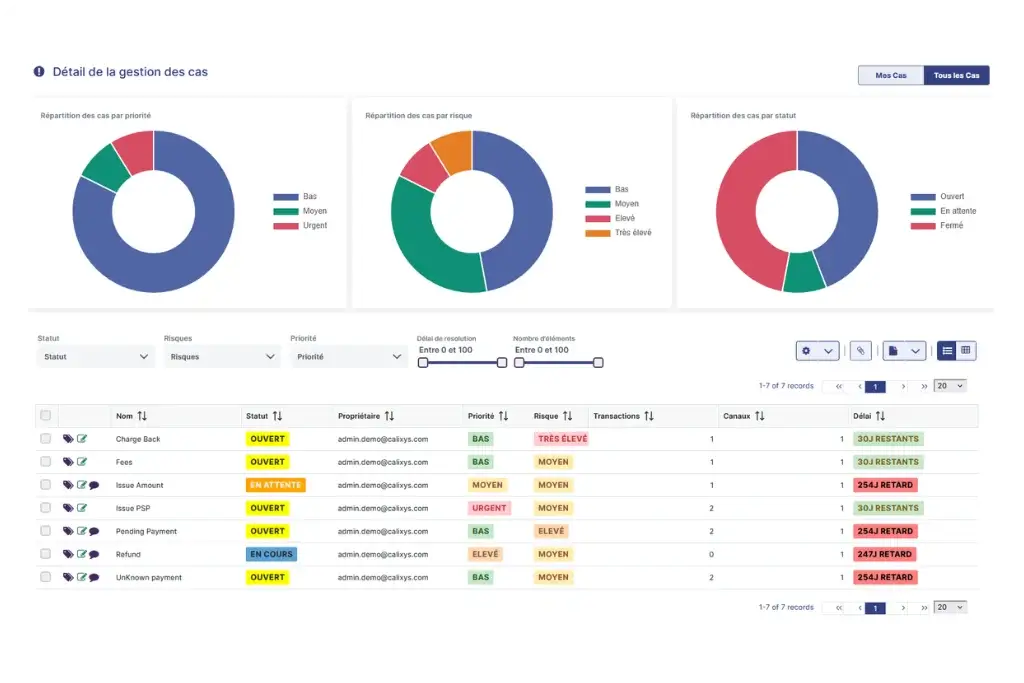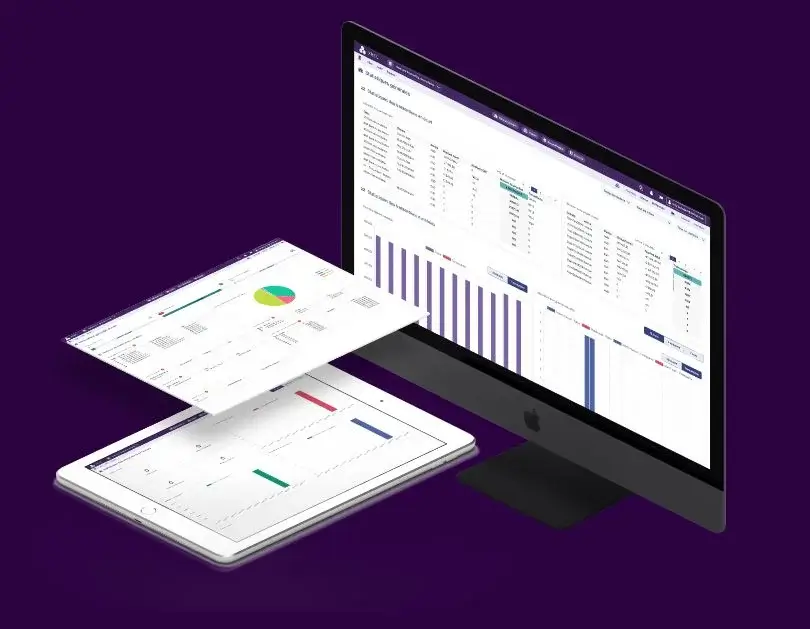Start-ups, Scale-ups and SMEs : Financial Management Challenges for Midsize Companies

Publié
Le 13/06/2024, par :
- Anne Marie Diom
Sections
Contexte
Midsize companies face unique financial management challenges. As they navigate growth, instability, and constant evolution, effective financial management is essential for long-term success. This article delves into the specific issues these companies face, focusing on the importance of account reconciliation and cash flow management in their financial strategies.
Managing Growth and Constant Evolution: The Root of Several Challenges for Midsize Companies
Team Growth
The rapid growth of midsize companies acts as a catalyst for change, pushing these organizations toward new horizons. This growth is often accompanied by a significant expansion of their internal teams, marked by the integration of new talents to strengthen existing staff. However, this dynamic evolution also brings a series of complex challenges for financial managers.
The increasing number of employees complicates communication and collaboration processes within the organization. Coordinating efforts across different teams and departments becomes more pressing, while the multiplication of stakeholders can sometimes lead to friction and delays in decision-making. To ensure optimal efficiency, midsize companies must constantly adapt their organizational structures, promote cross-functional exchanges, and encourage the smooth flow of information at all levels of the company.
Consequently, training teams to complement each other, and unifying financial processes has become essential and a major issue for financial managers. On the infrastructure side, midsize companies are often forced to adapt their tools or adopt more collaborative solutions. Team expansion also necessitates greater granularity, differentiated accessibility, and visibility.
In summary, the internal growth of midsize companies involves both team expansion, necessary investment in skill development, and structural and operational reorganization.
Business Development
Expanding the commercial activities of midsize companies requires constant adaptation to new markets, products, and services while maintaining effective cost control to ensure profitability. Opening new target markets and developing new products can lead to fluctuations in cash flow and additional financing needs to support growth. More customers also means more transactions and operations for financial teams to manage.
To handle this additional workload, companies face several options: strengthen their teams, train their teams, or implement automation processes to improve efficiency. This leads to the choice and implementation of new tools and requires allocating a new budget for this purpose. Financial managers must be able to anticipate these changes and implement agile strategies to manage financial resources optimally while ensuring company growth.
Financial Growth
Finally, the financial growth of midsize companies becomes a major challenge for financial managers, who must handle complex and often volatile cash flows. With sometimes unpredictable business cycles and short-term liquidity needs, cash management is crucial to ensure financial stability and support company growth.
Financial planning is also of paramount importance in this context, as it allows for anticipating working capital needs, planning future investments, and securing the resources necessary for the company’s development. However, this planning can be particularly complex for midsize companies, which, despite and sometimes because of their growth, face uncertain forecasts and resource constraints.
Risk management is also central. Credit risks, related to the solvency of customers and business partners, and operational risks, such as supply chain disruptions or technological failures, are among the main concerns of management teams. To address these challenges, midsize companies must implement robust risk management strategies, combining rigorous risk assessment, prudent management policies, and effective control mechanisms. Proactive risk management not only reduces exposure to potential threats but also strengthens the company’s resilience to external and internal shocks.
Finally, transparent and regular communication with investors is crucial to maintaining their confidence and supporting the company’s long-term growth. Investors seek reliable and relevant information on the company’s financial performance, growth prospects, and investment strategies.
In summary, the financial growth of midsize companies is a complex and multidimensional challenge, requiring proactive and strategic cash flow management, rigorous financial planning, effective risk management, and transparent communication with investors.
Focus on Reconciliation Processes for Midsize Companies
Tool Obsolescence
The rapid evolution of midsize companies often leads to the obsolescence of existing financial management tools. Regarding the technological tools used, it is common for companies to transition from a “DIY” model composed of disparate, temporary elements installed hastily with short-term functional goals, to a more advanced and structured system with long-term centralization, efficiency, and process standardization goals. This renders many of their tools obsolete and drives a broader digital transformation.
For account reconciliation, ad hoc solutions on Excel are no longer sufficient, and companies must move to more durable and collaborative tools to manage the growing volume of data and transactions. Obsolete systems can cause delays in the reconciliation process and increase the risk of errors, negatively impacting decision-making and the overall financial health of the company. Therefore, it is essential for midsize companies to invest in modern, scalable technological solutions to meet their constantly evolving needs.
Scalability and Centralization for financial reconciliation
Midsize companies need financial reconciliation solutions that can grow with them and adapt to fluctuations in their activity. Start-ups and scale-ups often have a growth path marked by challenges and upheavals. This is why they seek solutions robust enough to handle sudden (and sometimes short-lived) spikes in activity while being agile enough to maintain profitability when activity slows down.
Centralizing processes and data become essential to ensure operational efficiency and consistency of financial information. By consolidating all reconciliation operations within a centralized platform, companies can improve visibility and control over their financial processes, reduce inefficiencies, and minimize the risk of errors. The scalability of the solution also allows companies to quickly adapt to growth and changes in their business environment, avoiding the costs and complications of implementing new systems and processes as the company grows.
Build versus Buy
Thus, when it comes to scalability, growing companies face the dilemma of developing an in-house financial reconciliation solution or buying an external solution. Developing in-house presents a long-term investment but allows for greater customization of a bespoke solution. There may be a gap between the skills required to develop the desired project and the resources available in-house. This opens a whole new set of questions: which parts to outsource and which to develop in-house? Who will handle which tasks? Who will manage and coordinate the entire project? What budget should be allocated to the project? What are the risks involved? What timeline should be planned? And all these questions only cover the launch of the project. Later, some other questions will arise: who will oversee maintenance and updates? Will the developed solution adapt to new market’ needs? Who will train the teams to use the full potential of the tool?
Outsourcing can offer advantages in terms of cost, efficiency, and specialization, allowing companies to focus on their core business. However, it is important for companies to carefully weigh the pros and cons of each approach and choose the one that best meets their specific needs.
Modern technological solutions often offer a range of advanced features and specialized expertise that can be difficult to replicate in-house, justifying the investment in external solutions for midsize companies seeking increased operational efficiency and more effective financial management.
Additionally, the automatic evolution of external solutions also tips the balance. Midsize companies benefit from updates and new features with each new software version. This allows them to adapt to market changes and stay at the forefront of technology with a solution that, once again, adapts to their growth in every sense of the word.
XREC by Calixys: The Tailor-Made Solution for Growing Companies
Growing companies with a strong need for scalability and centralization looking for an automated, efficient, and accurate reconciliation solution can easily turn to XREC.
Firstly, this solution allows for the automation of all reconciliations on a single collaborative and accessible platform. Control and compliance operations are facilitated by the solution’s precision.
But beyond the power of the algorithm, it is also the 360° visibility provided by the solution that facilitates internal communication and communication with investors, as well as budget planning.
Dynamic dashboards, automatically generated and exportable, differentiated views by job or user profile, multiple levels of granularity, and automatic classification of discrepancies (Break management), all promote productivity, visibility, communication, and collaboration within companies.
Finally, the reduced implementation time (5-day fast-track program) and the support offered by our team of experts allow growing companies to remain agile while minimizing risks. For start-ups, scale-ups, and growing companies, intermediate and scalable models are also offered to always ensure maximum profitability and efficiency.



